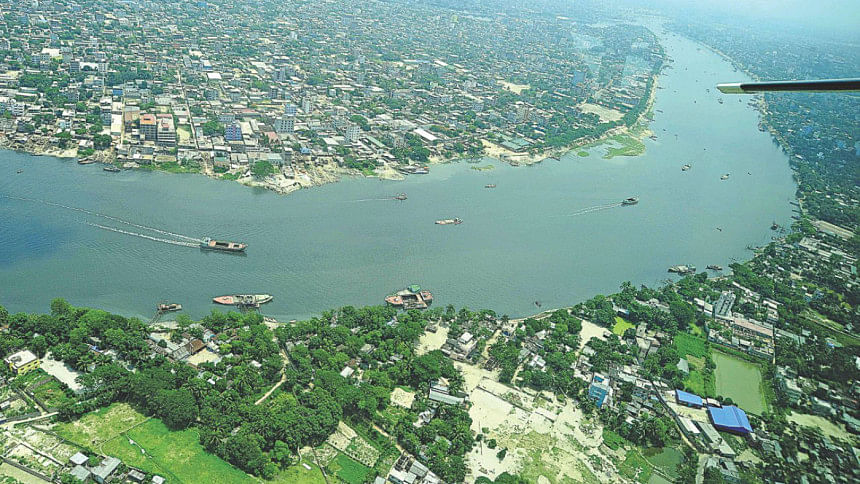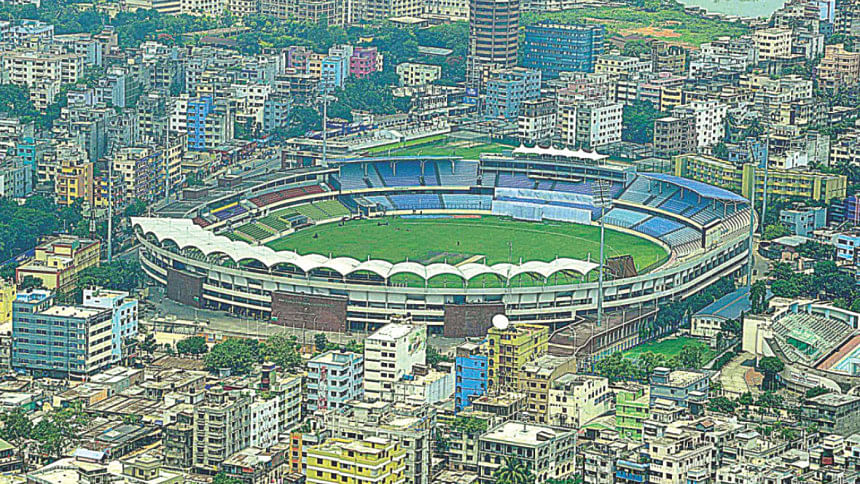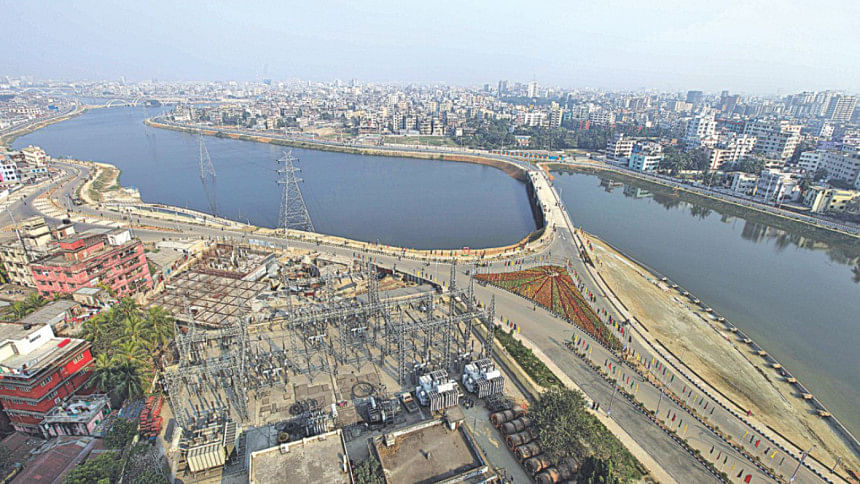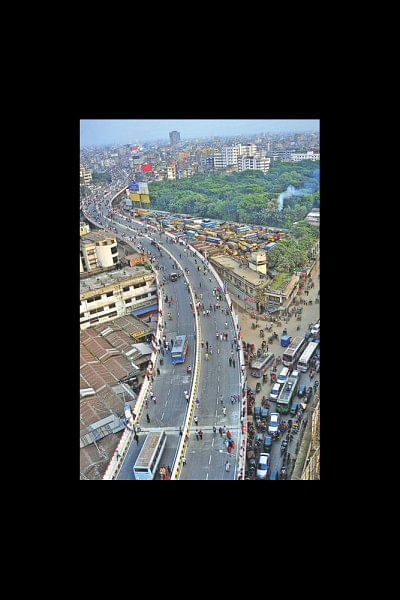Building a city of tomorrow

At present, Dhaka city's area has been extended up to 520 square miles and its population currently is 15 million. It is assumed that by 2021, Dhaka's population will increase up to 20 million which will make this city demographically larger than many Asian metropolises such as Beijing and Shanghai.
One of the biggest challenges ahead is to accommodate this massive human resource which, if utilised properly, can turn Dhaka into a major global economic centre.
During the pre-Islamic period, Dhaka's splendour was centred at Bikrampur, located in Munshiganj district, some twenty kilometres south of today's Dhaka. After the Muslim invasion of Bengal, the Sultans shifted the capital to Sonargaon, another suburb of the present day Dhaka located around thirty-five kilometres away from the current city centre. From the Mughal period and onwards, Dhaka started to flourish on both sides of the Buriganga River. Due to mass migration from different parts of the subcontinent in the post-partition period, the city started to expand in every direction in a somewhat unplanned fashion.

Dhaka Improvement Trust (current RAJUK) was formed in 1960 with the mandate to ensure planned urbanisation and to regulate and restrict any unplanned and unauthorised development in Dhaka. However, back in 1960 the area of Dhaka city was around 290 square miles with some one million people living in and around the city.
Dhaka is overburdened with increasing influx of people which is creating acute housing problem, traffic congestion and shortage of essential facilities such as water supply, electricity and waste management. To reduce these problems, the government has planned to develop the township called Purbachal New Town.
The vast fertile plain between Sitalakhya and Balu Rivers, which was a marshy lowland even a decade ago, is now the site of this mega development project. The project, after successful completion, is expected to entirely change the familiar face of our congested Dhaka city.
The 6,150 acre fertile plain has been transformed to make way for Purbachal New Town. A 300-foot wide expressway has already connected the site with Dhaka and industrially important cities of Gazipur and Narayanganj.
With 26,000 residential plots, artificial lakes and gardens, sports complex, and designated commercial, administrative and diplomatic districts, the area is considered to be the first planned township in Bangladesh. And this whole new part of Dhaka, only 16 kilometres away from the city centre, will decisively reshape this 400-year-old metropolis.
"This town along with other residential projects, such as Uttara phase 3, can significantly reduce the acute accommodation problem of Dhaka city," says M Bazlul Karim Chaudhury, chairman of Rajdhani Unnayan Kartripakkha (RAJUK).
"Besides, it will also help a lot to decentralise the current city population as many public offices and commercial establishments will be relocated to the new town. As a result, this new township will also help us to mitigate the future demand of housing, power supply and other citizen facilities all over the city," he adds.

Additionally, city planners are saying that implementation of this mega project will also help them to plan the overall renovation of the old parts of the city.
According to Md Sirajul Islam, chief town planner of Rajdhani Unnayan Kartripakkha (RAJUK), "Dhaka's large population and its sporadic distribution is a major challenge for the city planners when they are tasked with this city's renovation plan. This is why, decentralisation and relocation of a part of the city will help a lot to renovate and refurbish the old parts of Dhaka."
While city planners, architects and engineers are seeing Dhaka's salvation in this mega project, millions of Dhakaites are living in one of the world's worst living conditions. Due to the city's dilapidated waste management system, shortage of power and water supply, severe traffic congestion and ramshackle infrastructures, the capital remains highly vulnerable to disasters such as fire and earthquake. To perhaps illustrate these points, Economist Intelligence Unit ranked Dhaka as the second least liveable city in the world in 2015.

According to architect Iqbal Habib, member secretary, Urbanisation & Urban Governance Programme Committee of Bangladesh Paribesh Andolon, if we observe the pattern of the earthquakes that occurred from 2015 till the beginning of 2017, we can predict that Bangladesh might face an earthquake of high magnitude in the near future.
"We have two epicentres within our geographical border: one in Dowkey, Sylhet and another in Haluaghat, Mymensingh. If an earthquake, measuring a magnitude of 7.9 strikes from these epicentres, Dhaka would face an intensity of at least 6.5 magnitude due to which more than 30 percent of the buildings in Dhaka might collapse," he adds.
However, none of the government organisations have taken any initiative to identify the unsafe buildings, leaving hundreds and thousands of people defenceless against deadly disasters.
Dhaka's old part is particularly vulnerable where thousands of century-old buildings are located and thousands of new buildings have been erected on the foundations of those old buildings. Government officials often face a dilemma regarding whether they should preserve the heritage sites or demolish the buildings because of their chance of collapse at any time.
Architect Taimur Islam, chief executive of Urban Study Group, has been working on the preservation of Dhaka's heritage sites for more than 30 years. He suggests in this regard, "Many of old Dhaka's old buildings such as Ahsan Manzil or Lalbagh Fort are resilient enough to endure major earthquakes. However, I think the newer buildings which are erected defying the building codes are more vulnerable to collapse."
"Instead of demolishing and rebuilding these structures, we should focus on retrofitting. According to this process, there is no need to demolish the entire building; rather the building's inner structure will be consolidated by applying further reinforcing materials," he adds.
The good news is that recently government officials have started receiving training on retrofitting and disaster management under a project called 'Bangladesh Urban Resilience Project' funded by the World Bank. However, as the project was practically initiated in 2016, it is quite uncertain how long we have to wait to see the outcome of this very important initiative. Nonetheless, to sustain Dhaka as a liveable city in the years to come, steps have to be taken immediately to identify the risky infrastructures and strengthen the newer ones to avoid fatal consequences in the face of a disaster.
Another major crisis faced by the millions of Dhakaites is hazardous pollution resulting from the city's poor waste management system. According to Dhaka North and South City Corporation sources, a staggering amount of 5,500 tonnes of waste are generated in Dhaka every day. Of this, more than 1,700 tonnes of waste remain uncollected and untreated.
Both the city corporations have to collect this huge amount of waste manually with the help of around 8,000 workers in total. Moreover, all the collected wastes are dumped into a landfill in Matuail, an open field of 100 acres which has almost become inoperative due to constant accumulation of solid, untreated waste dumped from all over the city.
According to waste management officials of the city corporations, Matuail landfill cannot be used for waste disposal after 2017. In addition to that, Dhaka's environment is getting increasingly polluted by the existing tannery industries which dispose huge amounts of untreated carcinogenic chemicals into the air and water bodies of the city every day.
Despite repeated ultimatums, the government could not convince the owners to shift their factories to the Tannery Industrial Complex at Savar. Now, in 2017, we have yet to find an alternative to Matuail landfill for the waste disposal while the rest of the world is going through a recycling revolution.
It has been reported that Sweden has managed to recycle 99 percent of their waste. In Japan, despite a sustained population boom, the amount of waste generated in the cities is decreasing thanks to their efficient recycling system. So, to reshape Dhaka into a modern megacity the crisis of Dhaka's waste management has to be addressed without further ado. If things continue like this, there is no doubt that Dhaka will face a catastrophic situation within five years due to its exponential rise of population and untreated waste.
Despite these bleak realities, we have seen noticeable improvement in the city's transportation infrastructure. It is expected that the pillars of the long awaited Metro Rail will be erected by June 2017. The government is also planning to construct another flyover from Fakirapul to Uttara. Works are going on to construct three tiers of ring roads encircling the city which can significantly reduce traffic congestion. However, besides these long-term projects, authorities should also think about reducing the ongoing traffic congestion which is further accelerated by these massive construction works, blocking the city streets.
To improve the traffic environment of the city, it is necessary to implement the Strategic Transport Plan which emphasises on improving bus rapid transport, developing metro rail transport and the construction of arterial roads and flyovers. Dhaka's public bus services can be improved a lot if all the intra-city bus companies run double decker buses in all the routes. Bus fares and fleet improvement plan should also be implemented according to the plan. Besides, there are a number of railway stations in Dhaka city such as in Tejgaon and Banani which can be used for transporting a huge number of intra city passengers by the trains passing through the city.
It is not uncommon for a developing, overcrowded city like Dhaka to face crises regarding waste management, infrastructural development and congestion. However, we, the citizens of Dhaka, must ponder upon the question of why these crises are still prevailing 46 years after independence.
It is quite promising that a new Dhaka is being envisioned by establishing a new city with advanced amenities. However, if we cannot address the vulnerability of the city in the face of looming disasters such as earthquakes, our achievements in building mega structures will prove futile.
On a bright note, if we can solve these crises sustainably and immediately and if the current pace of development remains persistent for the next couple of years, there is no doubt that soon enough Dhaka will become a major economic centre in Asia.
The writer is a feature writer of Star Weekend.
E-mail: [email protected]

 For all latest news, follow The Daily Star's Google News channel.
For all latest news, follow The Daily Star's Google News channel. 



Comments